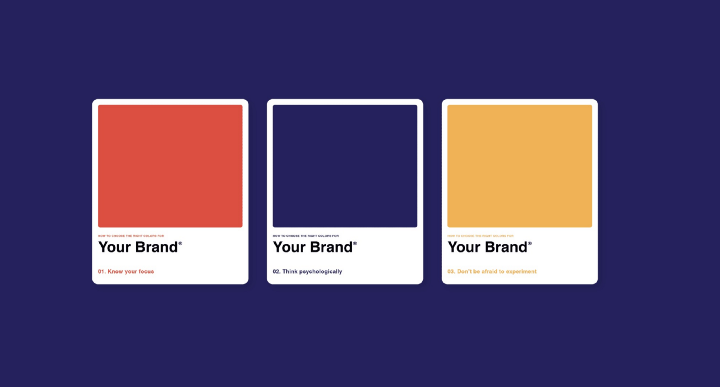Colors play such a distinct role in not only branding but our day-to-day lives. Colors can invoke feelings and emotions, and can even help your clients form an emotional connection with your brand. This is why choosing the right brand colors for your business is so important.

Whether you are just beginning to develop your brand, or you have decided to rebrand your business, choosing a brand color palette can seem overwhelming. Your brand colors communicate to your clientele who you are and what your brand represents.
Before choosing your brand colors, it is important to establish who you are as a brand. Even if you are an existing brand going through the rebranding process, it is an opportunity to reevaluate your brand messaging and what you want your brand to communicate to its clients. Ask yourself questions to determine your brand’s personality. Do I want my brand to say: Playful or serious? Casual or formal? Bold or subtle? Luxurious or affordable? These types of questions can help you nail down your brand identity. Once you have come to a decision on your brand messaging, you can use the following chart to determine your brand colors:
Red stands for passion, excitement and anger. It can signify importance and command attention.
Orange stands for playfulness, vitality and friendliness. It is invigorating and evokes energy.
Yellow evokes happiness, youth and optimism, but can also seem attention-grabbing or affordable.
Green evokes stability, prosperity, growth and a connection to nature.
Light Blue exudes tranquility, trust, and openness. It can also signify innocence.
Dark Blue stands for professionalism, security and formality. It is mature and trustworthy.
Purple can signify royalty, creativity and luxury.
Pink stands for femininity, youth and innocence. It ranges from modern to luxurious.
Brown creates a rugged, earthy, old-fashioned look or mood.
White evokes cleanliness, virtue, health or simplicity. It can range from affordable to high-end.
Gray stands for neutrality. It can look subdued, classic, serious, mysterious or mature.
Black evokes a powerful, sophisticated, edgy, luxurious and modern feeling.
Chart from https://99designs.ca/blog/tips/branding-colors/
An additional way to determine the personality of your brand is to create a mood board. If you have a rough idea of what you want your business to look like but are having trouble communicating it, create a mood board! Take inspirational photos, quotes, colors and more of your rough ideas and put them together. Seeing everything in front of you can help make the process less overwhelming and can make your choice of choosing a color palette a lot simpler.
If you have one color in mind but aren’t sure which colors would compliment it, try an online color palette generator like this one: https://coolors.co/. If anything, this can help start brainstorming on your brand colors!
Choosing and sticking to a brand color palette is one of the best strategies for growing brand awareness. To create brand awareness, it’s important to choose a color unique to your brand. For example, if you’re considering blue as your main, primary brand color, you want to choose a shade of blue that accurately represents your brand and is unique to your brand.
We recommend using between two to three primary brand colors and up to four or five secondary brand colors. Your primary brand colors will be your main, known brand colors. These colors will appear in your logo, branding, on team wear and more. Your secondary brand colors will compliment your primary colors and allow you more flexibility when designing additional branding pieces. We suggest having some neutral colors as part of your secondary colors to give you as many options as possible when creating additional branding pieces and when collaborating with other brands.
If you are not one hundred percent set on your brand colors, test them out! Before purchasing an entirely new team uniform, test out your colors in your marketing and see how your clientele responds. Get feedback from parents, students and outsiders to judge how people engage with your new colors. Try to get feedback from a range of different customers for accurate representation. You can even include your target audience in your rebranding. You can run polls on social media to feel out which colors your audience responds to best!
Once you have found your brand colors, stick to them! Display your brand colors in as many places as possible. Design your staff uniforms in your brand colors, incorporate them into your studio or gym space and incorporate your colors into your students’ uniforms. You can even enforce a training uniform and provide your students with options for training wear in your brand colors. The more you can use your brand colors, the more brand awareness you can create. The Limelight team is here by your side to help you create a new look that feels true to your brand.
